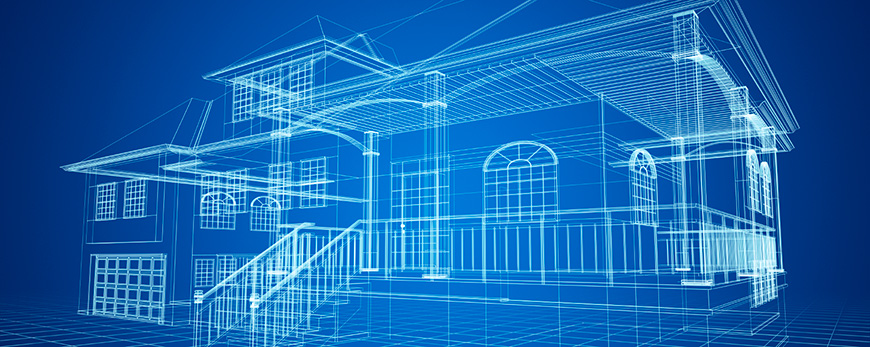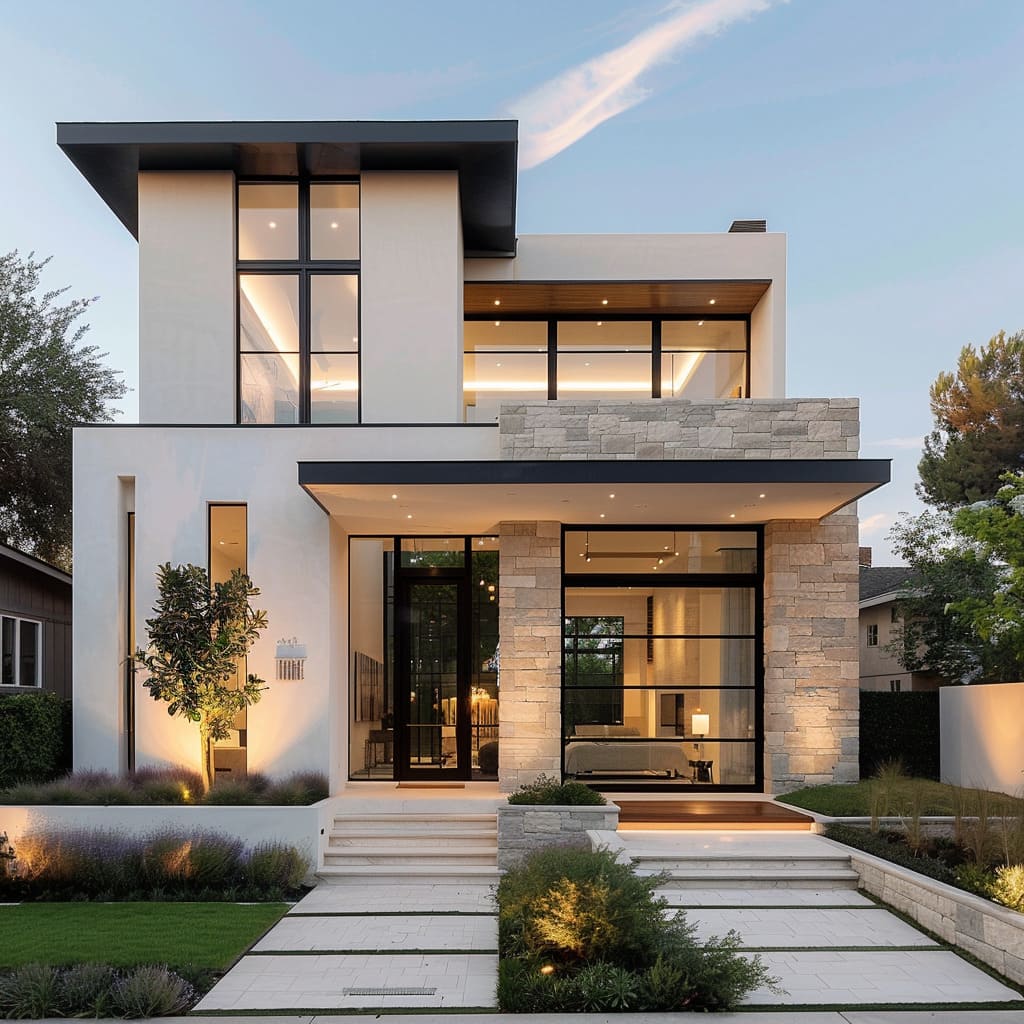Just How CDA Architects Supply Cutting-Edge Solutions for Lasting Style
The Effect of Technological Innovations on the Style Practices of Contemporary Architects
The rapid evolution of technical devices has considerably reshaped the design landscape for modern designers, cultivating unprecedented levels of development and sustainability. The integration of Structure Information Modeling (BIM), parametric layout, and expert system has not only streamlined cooperation amongst diverse groups but also redefined job implementation. As architects accept these advancements, they are confronted with complicated difficulties that might impact their creative processes. Checking out these characteristics exposes a nuanced interaction between technology and typical layout methods, motivating a closer exam of what the future holds for architectural techniques.
Development of Architectural Tools
Just how have architectural tools transformed the style and building processes over the centuries? The advancement of architectural devices has actually significantly impacted the efficiency, precision, and creative thinking of layout and building and construction. In old times, engineers rely upon basic instruments such as plumb bobs, gauging poles, and standard geometry to produce structures. These tools laid the structure for very early building method, permitting the construction of iconic frameworks, albeit with restrictions in precision and complexity.
With the arrival of the Renaissance, the intro of the compass and the protractor marked an essential shift. These devices allowed engineers to accomplish greater precision in their designs, assisting in the appearance of more elaborate and proportional structures (cda architects). The Industrial Transformation even more changed architectural experiment the intro of mechanized devices and materials, allowing for larger and a lot more ambitious tasks
In the 20th century, the development of computer-aided layout (CAD) software changed the landscape when again, giving designers with extraordinary abilities in modeling and visualization. Today, progressed tools such as Building Details Modeling (BIM) and parametric style software program continue to press the boundaries of architectural innovation, allowing an extra integrated method to style and construction processes.

Boosted Collaboration in Design
As modern technology remains to develop, enhanced cooperation in style has come to be a foundation of modern building method. The integration of electronic tools such as Structure Info Modeling (BIM), cloud-based platforms, and progressed visualization software has actually changed the method architects, designers, and stakeholders communicate throughout the design procedure. These devices help with real-time interaction, enabling teams to share concepts, adjustments, and responses instantaneously, regardless of geographical area.
Furthermore, digital reality (VIRTUAL REALITY) and enhanced fact (AR) have additional enriched joint efforts by making it possible for immersive experiences that enable customers and team participants to visualize jobs in a more interesting manner. This level of communication not only improves understanding yet also cultivates a feeling of possession amongst stakeholders, leading to even more enlightened decision-making.
Additionally, interdisciplinary partnership has actually been streamlined with these technical advancements, allowing architects to function a lot more very closely with various other experts, such as city coordinators and ecological experts. The result is an extra natural technique to make that thinks about different perspectives and competence. Inevitably, enhanced cooperation in design is not merely a trend; it is essential for producing ingenious, useful, and cosmetically pleasing style in an increasingly complex world.
Sustainability Through Technology
Sustainability in design has actually significantly come to be linked with technical technology, driving the sector towards eco liable techniques - cda architects. Contemporary engineers are leveraging innovative modern technologies to decrease ecological effect while improving the performance of buildings. One noticeable instance is the use of Structure Info Modeling (BIM), which enables accurate planning and resource appropriation, lowering waste throughout building and promoting power effectiveness throughout a building's lifecycle
Furthermore, smart products and energy-efficient systems are being integrated into layouts to maximize resource usage. Technologies such as solar cells and green roof harness eco-friendly power sources, adding to minimized carbon footprints. In addition, the application of expert system in layout check it out processes makes it possible for designers to mimic and analyze power consumption, leading decisions toward more sustainable results.
The integration of sustainable innovations not only straightens with global ecological goals however also satisfies an increasing need from consumers for green options. As architects accept these innovations, the emphasis changes in the direction of creating areas that are not just aesthetically pleasing yet also functionally sustainable, therefore redefining the requirements of modern-day architecture. This way, technology offers as a stimulant for sustainability, enabling designers to design buildings that regard and boost the natural surroundings.
Challenges in Application
While technical advancements in architecture hold wonderful promise for improving sustainability, their execution often experiences substantial obstacles. One primary challenge is the steep knowing curve connected with brand-new modern technologies. Architects and construction experts might need considerable training to effectively utilize sophisticated software application and tools, which can delay job timelines and boost prices.
Additionally, the assimilation of emerging technologies, such as Structure Information Modeling (BIM) and sustainable materials, frequently requires partnership across multidisciplinary groups. This cooperation can be hindered by differences in know-how, operations, and interaction designs, causing prospective disputes and ineffectiveness.
Financial constraints further complicate the fostering of cutting-edge modern technologies. Several building firms, particularly smaller ones, might do not have the resources to purchase advanced tools, restricting their capability to take on larger companies that can pay for such investments.
Moreover, governing structures and building regulations may not maintain speed with technological innovations, producing uncertainty and potential conformity problems. This challenge can inhibit designers from fully welcoming new modern technologies, as the danger of non-compliance may surpass the benefits. Therefore, dealing with these application challenges is crucial for the find out effective integration of technical developments in modern architectural techniques.
Future Fads in Architecture
The challenges associated with the application of brand-new technologies in design have actually triggered a reevaluation of future fads within the industry. As designers navigate concerns such as sustainability, urbanization, and social equity, they are progressively adopting cutting-edge modern technologies to improve design performance and environmental performance.
One noticeable pattern is the integration of fabricated intelligence (AI) in the style procedure. AI devices can analyze large datasets to educate layout choices, enhancing both imagination and capability. Similarly, Building Info Modeling (BIM) remains to advance, enabling real-time collaboration among stakeholders and promoting streamlined project administration.
Sustainable design practices are also acquiring momentum, with architects focusing on adaptive reuse and regenerative design principles that decrease source usage and waste. The unification of wise materials and renewable resource resources will certainly better boost the strength of structures despite environment modification.
Furthermore, the rise of parametric design permits for even more tailored and context-sensitive building services. By utilizing these advancements, architects are positioned to produce built environments that not just attend to the instant needs of culture yet likewise anticipate future obstacles, consequently redefining the function of architecture in an ever-changing globe.
Final Thought
